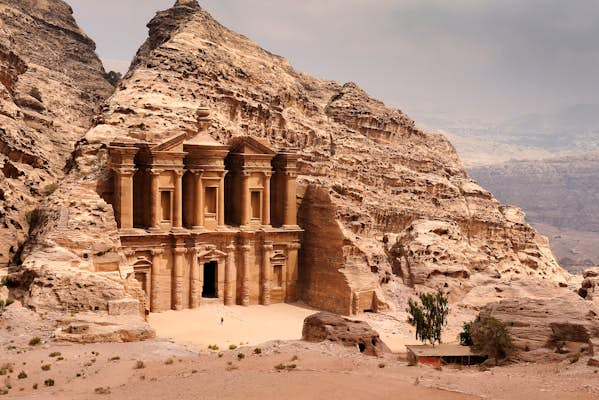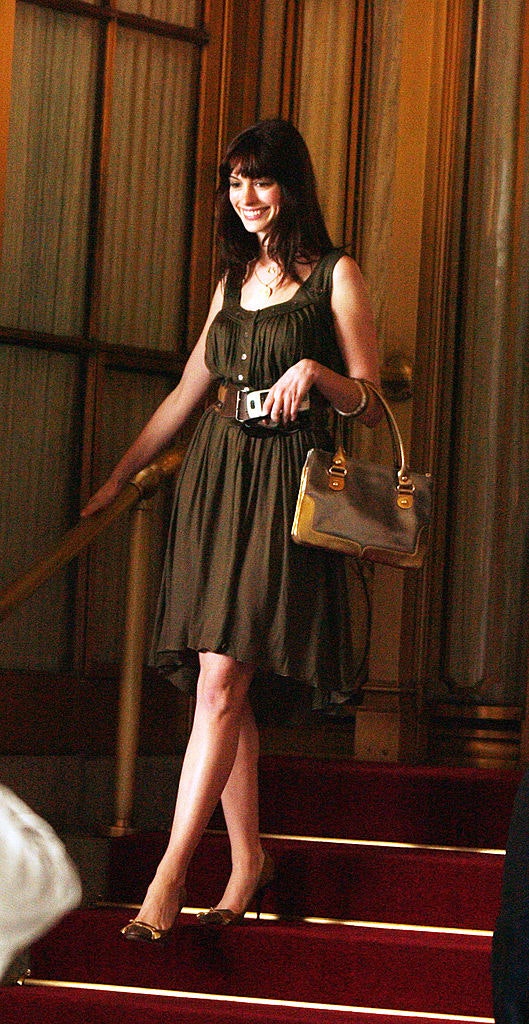
Visiting Petra? Here’s how to do it responsibly
Painstakingly hand carved from the rose-colored sandstone cliffs, the magical timeworn city of Petra is Jordan’s most-loved attraction and a bucket-list checkbox for travelers the world over.
However, in a sad touch of irony, this fragile site, once a tightly held Bedouin secret whose whereabouts were lost to Western knowledge for well over 1000 years, has suffered from overtourism. Nearly loved to death, Petra is regularly included on the World Monument Fund’s list of the most endangered sites in the world. The biggest threat is increased tourism, as annual visitor numbers reached over 1 million in 2019 and have climbed to around 900,000 per year in the post-pandemic period.
Preserving Petra must be at the forefront of travelers’ minds so we don’t let it crumble away below our feet and before our eyes. Here’s how to visit the site responsibly.
Visit off season
Petra has two high seasons – March and April and September and October – when the site can draw around 4000 people a day. If you want that seemingly impossible moment of encountering the Treasury without the crowds or a silent walk through the Siq, plan your trip for winter, from December to February. You’ll have to bundle up, but you could be uncovering Petra’s secrets on your own. If your vacation dates are already set in stone, beat the crowds by arriving early in the morning; the site is open from 6:30am year round. Visiting during a less-busy period is beneficial for both the management of the site and your overall experience of it.

Reconsider whether you need a ride
The picture-perfect image of camels resting in front of the Treasury has driven countless travelers to meander down the Siq, the 1.2km-long (0.75-mile) narrow winding gorge at the site’s main entrance, in search of the iconic shot. However, some return on this route with a less-than-rosy outlook after seeing the treatment of the camels, horses and donkeys in Petra.
Collaboration between the local Bedouin and the Jordanian government has seen the plight of the working animals improve, but there is much work to be done. Although many owners care for their animals, incidents of mistreatment still happen, from child handlers delivering overzealous commands to the Street of Facades becoming something of a racetrack as the lumbering “Bedouin Ferraris” are hastily shuttled back and forth to cater to visitor demand.
Understand that the ancient city of Petra is a vast site – 264 sq km – so don’t try to cover the entire place in a single session, even if you’re only here for the day. Know your limit and pace yourself, especially if you’re planning to tackle the 850 delicate steps up to the Monastery, worn down and rutted by the increase in donkey traffic. If you decide to take a ride, seek out an adult provider (not a child) with animals that appear healthy and capable of carrying the weight of their prospective passenger. Pay the correct fare (as posted at the Petra Visitor Centre) and avoid bargaining down, which pressures the Bedouin animal-handlers to rush back and make up the lost income. Any incidents of abuse should be reported, ideally with photo or video evidence, to the tourist police at the visitor center.

Tread lightly and don’t leave a mark
The ancient Nabataean civilization sculpted the immaculate facades of Petra from giant slabs of malleable sandstone, a rock that’s supremely easy to etch, whether by hand, rain or hiking boot. The Nabataeans understood Petra’s vulnerability to the weather and constructed a network of water-diverting aqueducts and cisterns to keep mother nature’s liquid chisels at bay.
What the Nabataeans didn’t plan for was millions of tourists descending on their capital, pounding the pavement with high-tech walking shoes designed to dig into the ground. On your visit, opt for shoes with a lighter tread and leave hiking poles with pointed ends behind. Unfortunately, you’re also likely to see other visitors, and sometimes even local Bedouin, climbing on monuments, etching their names and love notes into the rock facades and running their fingers along millennia-old masonry, especially in the Siq. Let Petra leave its mark on you instead of the other way around.

Shop ethically
The prosperous trade capital of the Nabataeans, Petra in some ways remains a bustling bazaar where vendors hawk their wares to the never-ending stream of passersby. Ad-hoc stalls line the Street of Facades from the Treasury, cascade down the ledges in front of the Royal Tombs and perch impossibly on the steps up to the Monastery.
As more travelers visit Petra, a global crossroads for goods since ancient times, the locals can and should benefit economically, but there are some things to look out for and avoid when you’re browsing.
- Be wary of “authentic artefacts,” which have likely been looted from tombs and are illegal to buy and sell.
- Avoid natural souvenirs such as colorful striped rocks and jars of sand, which literally take away from Petra’s landscape.
- Some of the shops are run by children. Buying trinkets from them encourages their parents to keep them out of school to run the business.
Bring your own water and skip the plastic bottles
There’s no better Bedouin pastime than slowly sipping a piping hot cup of sugary black tea, and many of the restaurants and cafes in Petra offer the chance to stop and take a break on your strenuous journey. While we can’t say no to a steaming cuppa, we draw the line at purchasing plastic bottles of water, which must be carted in and only add to the mounting global plastic plague. Before you leave home, bring a large water bladder to keep you hydrated around the whole site.

Step away from Petra’s main street
Petra counts more than 800 registered sites, including some 500 tombs, on its list of places to see, and many of the best and most famous are along a well-trodden path. Although Petra would take days to explore fully, most visitors come for a day and stick to the site’s main street, which can cause congestion and overcrowding at Petra’s big-hitters. Diverting by just a few steps to the valleys beyond can change your entire experience: even popular and well-marked trails, such as Al Kubtha with an unbeatable eagle-eyed view of the Treasury, see just a fraction of the footfall.
One of Petra’s more challenging secrets is entering through the “back door” near the Monastery – part of the country-spanning 675km-long (420-mile) Jordan Trail – and you’ll almost certainly have the space all to yourself if you start early before even the most eager adventurers begin their climb from the Siq-end of the site. Another rewarding walk is a jaunt through Wadi Farasa to the High Place of Sacrifice, passing a number of lesser-visited but still just as impressive tombs, including the Roman-columned Garden Triclinium. It’s best to engage a local guide if you’re headed off the beaten track, as signage is poor.

Stay longer
Yes, the visitor numbers to Petra have been climbing faster than the steps up to the High Place of Sacrifice, but many travelers only pencil in enough time for a flying visit, putting pressure on water resources in local accommodation in this desert environment, which must be swapped out daily for new arrivals. You could also be making better use of your Jordan Pass – the Jordan Expert version includes three consecutive days at Petra. Linger longer to better preserve one of the world’s most incredible and endangered ancient sites: in both your own memories and for the travelers who visit next.
Lauren Keith traveled to Jordan with support from Intrepid. Lonely Planet contributors do not accept freebies in exchange for positive coverage.
You May Also Like

Who is the Most Beautiful Woman in the World?
August 1, 2022
All The Best Looks From ‘The Devil Wears Prada’
September 28, 2024
